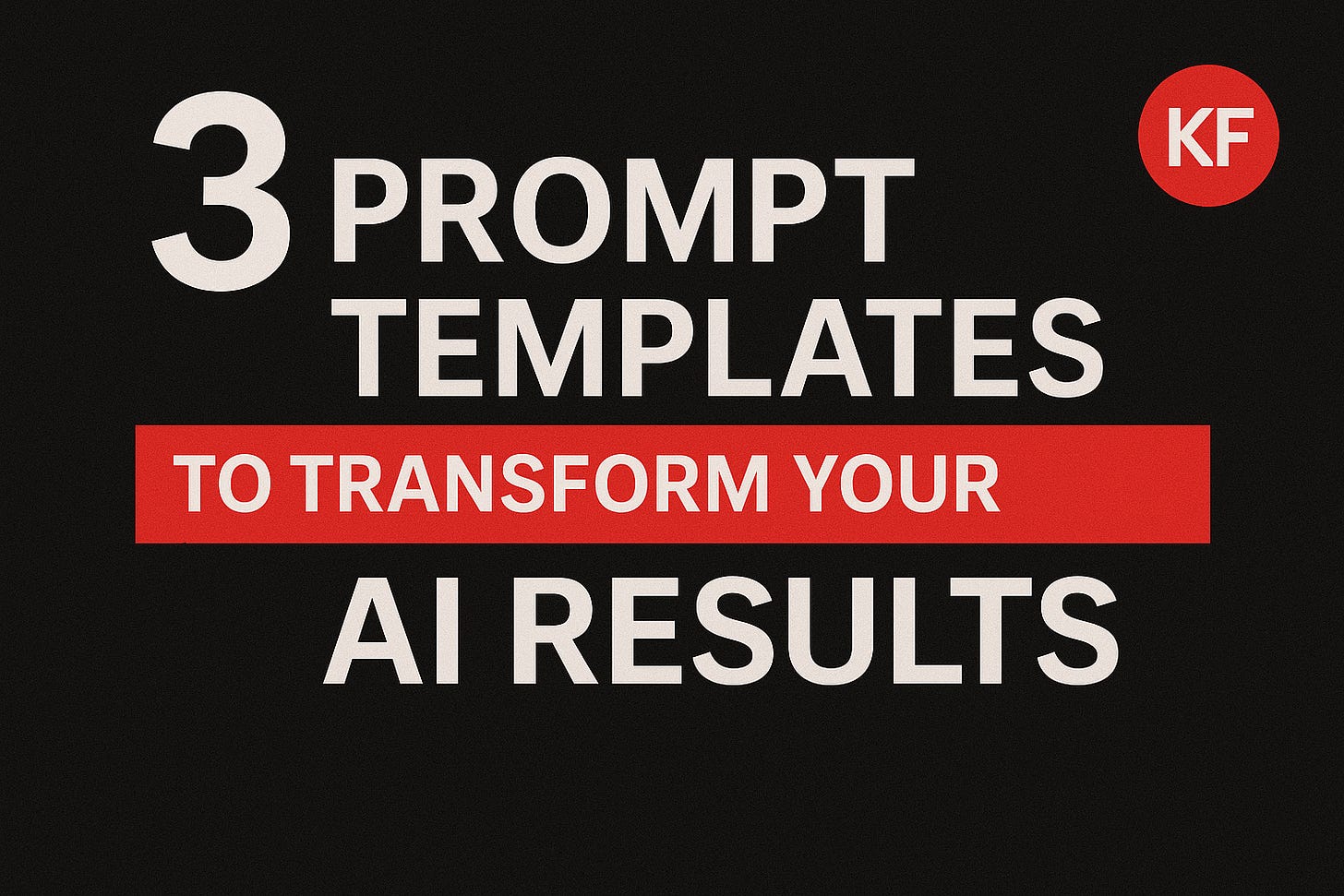3 Prompt Templates to Transform Your AI Results
Getting better at prompting is one of the best ways to improve your AI results. Here are 3 prompting techniques to transform your results.
Here are three prompting techniques that will transform your results overnight.
1. The Prompt Chain
Start with a simple prompt structure:
- Goal: Clearly state your main goal with specifics.
- Return Format: Specify the exact output structure and required details.
- Warnings: Highlight potential pitfalls or accuracy considerations.
- Context: Provide relevant…
Keep reading with a 7-day free trial
Subscribe to Kieran’s Substack - The AI Marketing Generalist to keep reading this post and get 7 days of free access to the full post archives.



